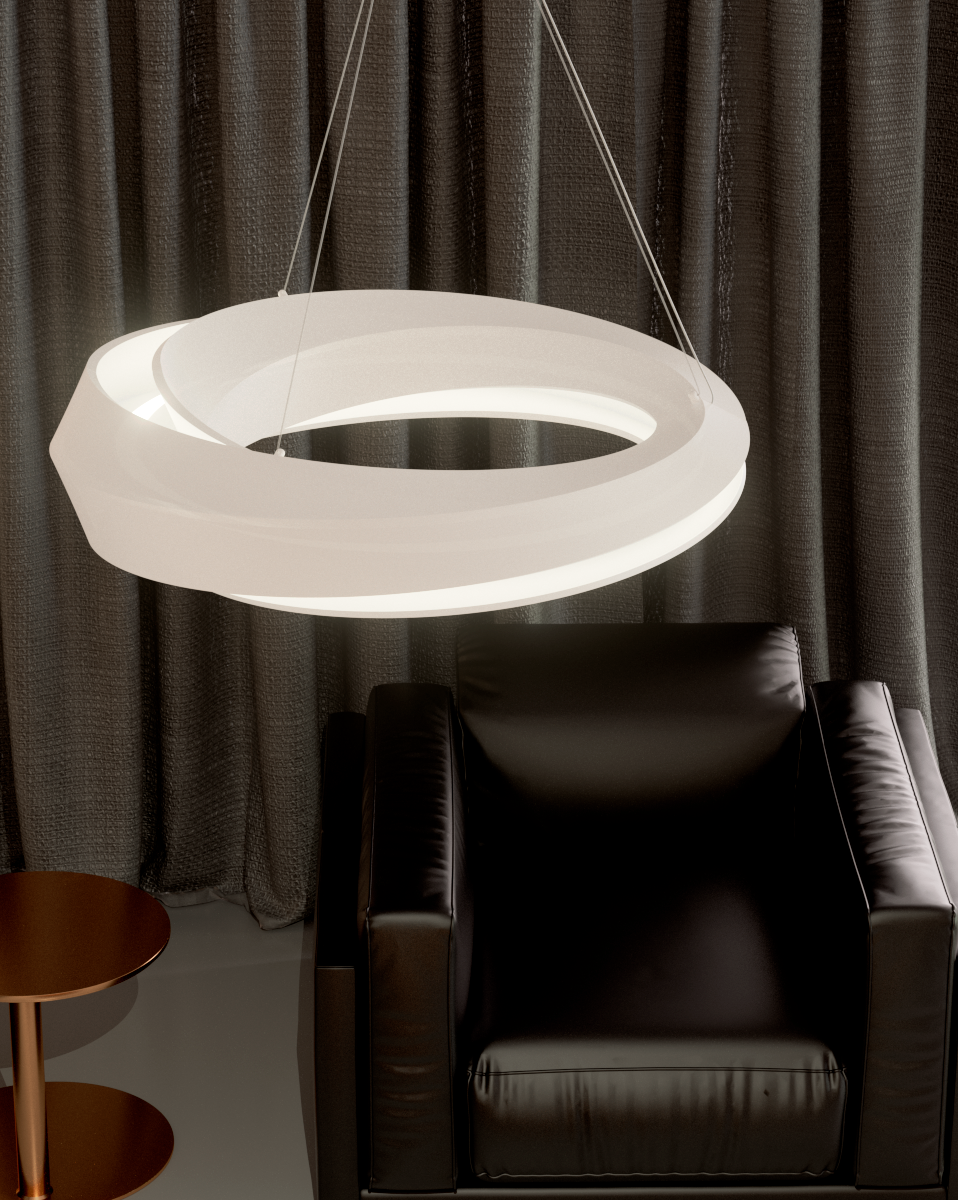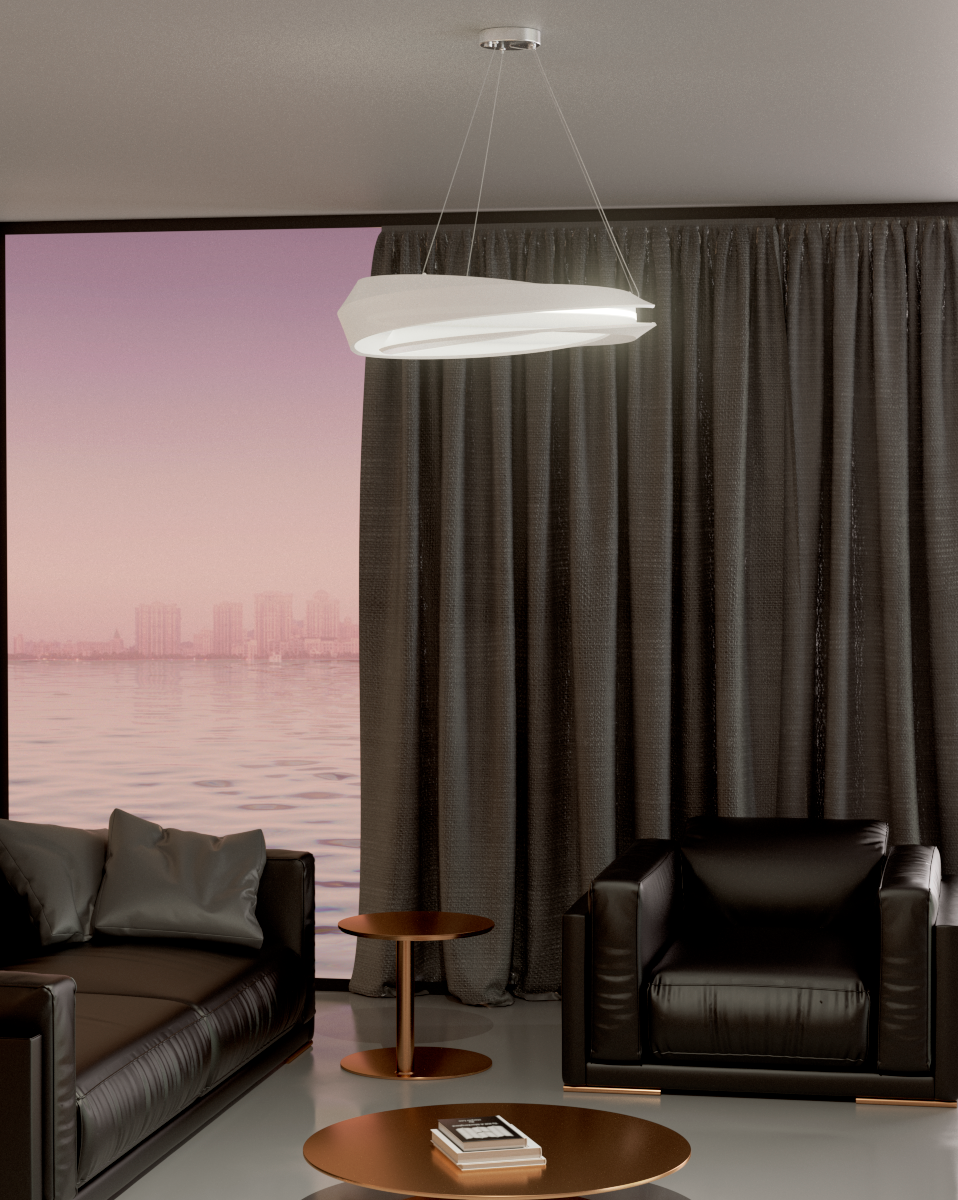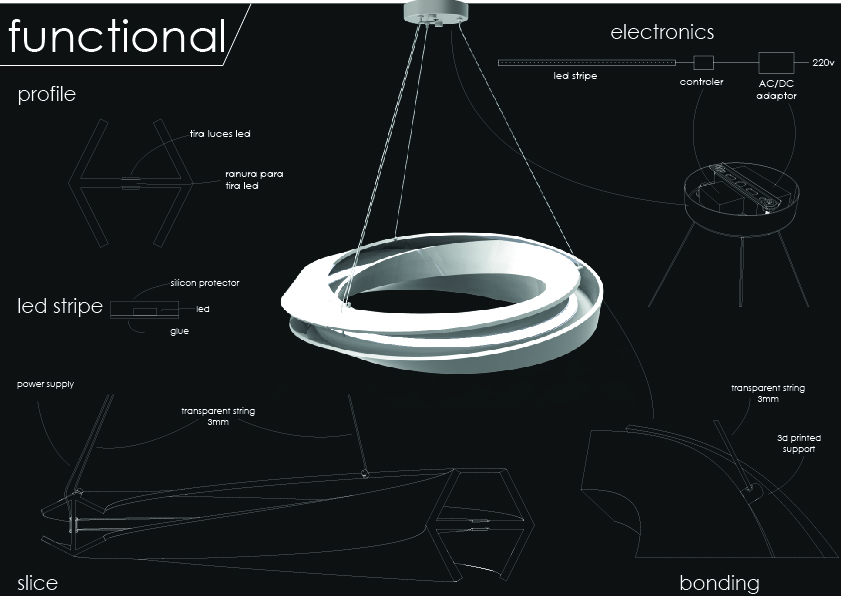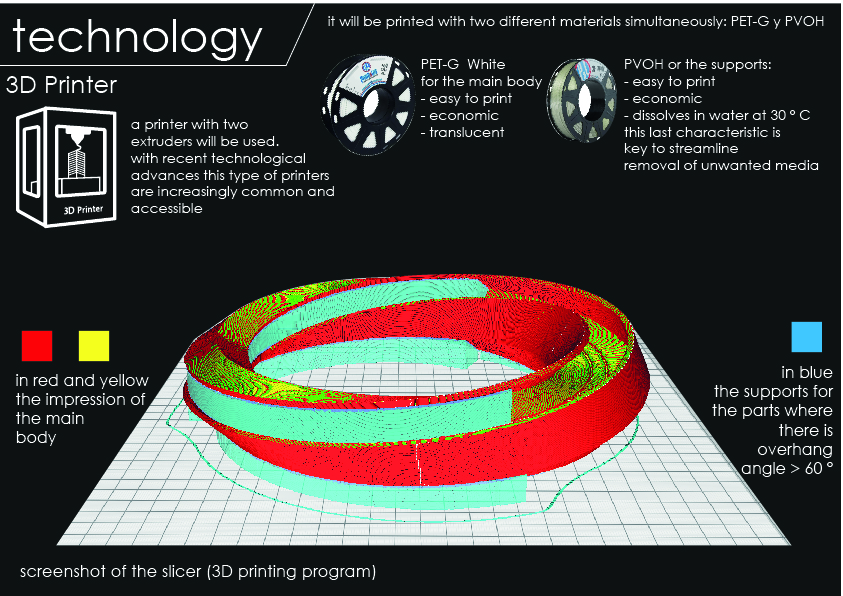Lupi Lamp
About Project
Lupi
Lupi is a pendant light, with a modern and innovative appearance, intended to be used in the home.
The aim is to explore and develop the morphological component, taking as a starting point the concept of a ‘Moebius strip’. This is about a band or tape that by rotating one of the ends by 180 ° and joining it to the other end, a surface that has only one face is generated, that does not have an inside and an outside and is not orientable.
In this case, what is done is to carry out the same operation but with a slightly modified H profile. With this we get a way to contain the light source, and with the channels that are created to direct the light. In this way it is achieved that in one part of the lamp the light comes out vertically to both sides and in another the lighting comes out horizontally, in the middle making a progressive transition. It is hypnotic to follow the path that light makes around the object, especially when finding that it is endless and infinite.
To carry out it is proposed to make the body in 3D printing. This process is found to be the most suitable for making the complex geometric shape. In addition, the technology and materiality of the process are used to add one more component to the product: translucency. When printing with a translucent filament, not only does the object illuminate through the opening that is generated thanks to the H profile, but the entire product is transformed into a luminous body that emanates light.
The method of bonding between the upper part and the lower part is by means of 3 transparent yarns of 2.5mm. Taking into account the light weight of 3D printing, this material can be used, which suggests that the lamp is floating.
It is sought that when observing the luminaire it seems as if it were suspended in space, where through its complex and intricate geometry it manages to distribute the lighting from its interior around the environment, either through the openings it has in its body, or thanks to the translucency of its material.
-

Lupi Lamp - 1-4d28b2c1
Lupi Lamp - 2-fcce3b65
Lupi Lamp - 3-291224bc
Lupi Lamp - 4-e5562143
Lupi lamp - 5-28f7b6fa
Lupi Lamp - 6-c60e6db8 - Mateo Allen
- Allen Design
- Furniture design: series | Furniture: collection | Interior design: Art & Crafts projects | Product design: light | Product design: object
-
Lupi
Lupi is a pendant light, with a modern and innovative appearance, intended to be used in the home.
The aim is to explore and develop the morphological component, taking as a starting point the concept of a 'Moebius strip'. This is about a band or tape that by rotating one of the ends by 180 ° and joining it to the other end, a surface that has only one face is generated, that does not have an inside and an outside and is not orientable.
In this case, what is done is to carry out the same operation but with a slightly modified H profile. With this we get a way to contain the light source, and with the channels that are created to direct the light. In this way it is achieved that in one part of the lamp the light comes out vertically to both sides and in another the lighting comes out horizontally, in the middle making a progressive transition. It is hypnotic to follow the path that light makes around the object, especially when finding that it is endless and infinite.
To carry out it is proposed to make the body in 3D printing. This process is found to be the most suitable for making the complex geometric shape. In addition, the technology and materiality of the process are used to add one more component to the product: translucency. When printing with a translucent filament, not only does the object illuminate through the opening that is generated thanks to the H profile, but the entire product is transformed into a luminous body that emanates light.
The method of bonding between the upper part and the lower part is by means of 3 transparent yarns of 2.5mm. Taking into account the light weight of 3D printing, this material can be used, which suggests that the lamp is floating.
It is sought that when observing the luminaire it seems as if it were suspended in space, where through its complex and intricate geometry it manages to distribute the lighting from its interior around the environment, either through the openings it has in its body, or thanks to the translucency of its material.
Designers/Architects
Mateo Allen
Company
Allen Design






